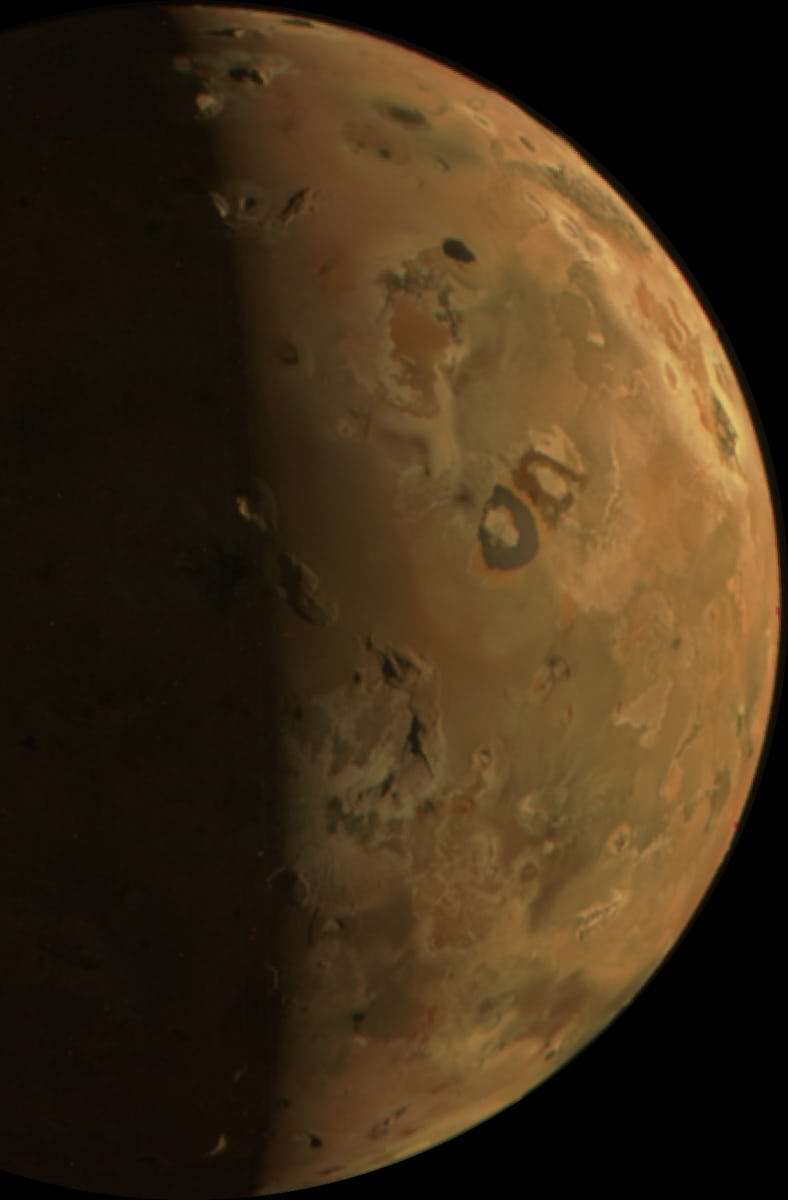Look! NASA Captured A Rare Closeup of the Solar System’s Most Terrifying Moon
Io is the most volcanically active moon in the Solar System.

Last weekend, NASA’s Juno spacecraft flew over the southern hemisphere of Jupiter’s moon Io. The close flyby brought Juno within 930 miles of the sulfur-shrouded hellscape of volcanoes and lava lakes that make up Io’s surface. In December 2023, the spacecraft flew over Io’s northern hemisphere and sent home striking photos. This time, Juno captured images of lava flows, volcanic eruptions, mountains, and roiling lakes of lava with islands in the middle.
Tons of sulfur erupted from Io’s volcanoes gives the moon its red and yellow coloring.
Twin Volcanic Plumes
One of the coolest images from the February 3 flyby shows two towering volcanic plumes rising over Io’s horizon — about 2,400 miles away from the spacecraft. The pair were “emitted either by two vents from one giant volcano, or two volcanoes near each other,” writes the Southwest Research Institute on its website.
More than 400 active volcanoes (that we know of) dot Io’s surface. The moon’s constant eruptions are the product of a fierce gravitational tug-of-war between Jupiter and two other moons, icy ocean worlds Europa and Ganymede. Their competing gravity creates powerful tides deep in Io’s interior, stretching the moon’s innards back and forth — and generating enough heat to power a world where rivers of lava flow beneath sulfurous plumes.
The question is whether all that volcanism is driven by an ocean of liquid magma, similar to Earth’s mantle but even hotter, or by a super-hot solid metal core? NASA hopes Juno can shed some light on that question by studying Io from above.
The pair of plumes here are visible over Io’s horizon from 2400 miles away. It’s not clear whether they come from one huge volcano or from two very close volcanoes, but SwRI scientists are trying to find out.
A Call for Help
The images released to the public so far come from the JunoCam, a high-resolution camera that Juno carries mostly to show Jupiter and its moons to the public in wavelengths of light that human eyes can actually see. But there’s a lot more from the JunoCam waiting to be converted from raw data into actual images.
“It will be a challenge to sort all this out, and the JunoCam scientists need your help, writes NASA in an announcement posted February 7. A community of volunteer image processors has worked with JunoCam data in the past, and other volunteers have churned out a steady stream of images made with JWST data, as well.
Other instruments, which see the universe in infrared and ultraviolet light, also gathered a trove of data as Juno flew past Io.
This article was originally published on